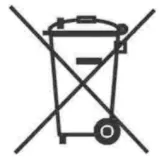
How to get a UL 507 Test Report?
Currently, Amazon has become the No.1 retailer for electronic products. It is reported that 18% of sellers on the Amazon platform sell electronic products. However, as the number of sellers offering these products increases, Amazon has tightened its review process. Recently, many customers have inquiRED about complaints regarding product fires on Amazon and the requirement to provide a ul report. What shoULd they do? This is a common concern among sellers of electronic and electrical products.
What is the UL 507 Safety Standard?
The UL 507 standard applies to two major categories of non-industrial fans and blowers:
1. Fans used for air circulation, such as table fans and ceiling fans.
2. Fans used for ventilation, such as attic, wall, window, and household range hood fans.
These fans are installed in accordance with the National Electrical Code (NEC). The testing is similar to ul 705, with additional tests for startup current, humidity control, and optional speed control.
Scope of UL 507 Standard for Electric Fans
1) Covered Products:
a) Fans and blowers for air circulation, including table, ceiling, and hanging fans.
b) Fans and blowers for ventilation, such as attic, wall-mounted, ceiling-inserted, household range hood, canopy-type, and window fans.
c) Dryer-type fans for drying carpets or floors.
d) Evaporative coolers.
e) Air filtration equipment.
f) Fan-based deodorizers and air fresheners.
g) Component fans.
h) Low-voltage component fans.
These products must have a rated voltage of 600V or lower and are designed for use according to the ANSI/NFPA 70 National Electrical Code.
2) Exclusions:
- Fans that are part of air heaters, ventilation units, or blowers used in furnaces, refrigeration, or air conditioning.
- Fans equipped with fuses that disconnect in the event of a fire.
- Fans not intended for household use in cooking areas.
- Fans used in hazardous locations as defined in ANSI/NFPA 70.
- Fans installed above solvents, flammable cheMICals, or vapors.
- Fans used in chemically corrosive environments.
- Humidifiers.
UL 507 Certification Testing Items and Requirements
1. Startup Current Test
The fan must start and REACH normal running speed without tripping a non-time-delay fuse when powered on. According to NEC (ANSI/NFPA 70 - 1993), the fuse rating must match the motor branch circuit rating. The fan must start three times at rated voltage when connected to a low-current circuit.
2. Input Test
The input current of the fan must not exceed 110% of the rated value when operating under real-use conditions at maximum rated voltage and frequency. The fan must be tested at appropriate potential voltage, with airflow restricted to ensure a uniform intake.
3. Temperature Rise Test
The fan must be tested to ensure that its temperature does not reach levels that could cause fire, damage materials, or exceed specified limits. The ambient temperature baseline is 86°F, but tests can be conducted between 50°F - 104°F. The fan must run under load until a stable motor temperature is reached.
4. Undervoltage Test
The fan must continuously start and run under restricted airflow conditions that generate a heavy load while operating at 85% of the rated voltage.
5. Dielectric Voltage Withstand Test
The fan must endure a 60Hz electrical charge between live parts and dead metal parts at high temperatures for one minute without failure.
- Test voltages:
- 1,000V for fans with ≤12 HP and ≤250V.
- 1,000V + additional voltage for fans with >12 HP or >250V.
A 500VA or larger transformer is used to apply the test voltage gradually and hold it for one minute.
6. Water Spray Test
The fan is installed as in actual use and exposed to water spray for 4 hours. After testing, insulation resistance and dielectric tests are performed immediately and repeated after 12 hours. No water should be present in electrical connections.
7. Metal Coating Thickness Test
Ensures that zinc and cadmium coatings meet thickness requirements to prevent corrosion.
8. Marking Durability Test
Ensures labels on UL-certified products remain attached and legible under various conditions, including oven aging, immersion, standard atmosphere, abnormal exposure, and outdoor exposure tests.
9. Capacitor Test
Capacitors undergo burnout and leakage current tests. A capacitor fails if it reaches a temperature high enough to ignite test materials or if leakage current exceeds acceptable limits.
10. Overload Test for Switches and Controls
Ensures that motor switches and control contacts can withstand repeated operation without electrical or mechanical failure, excessive pitting, or burning.
ul test report Application Process
1. Confirm the testing standard and send 1-2 samples.
2. Fill out the UL application form (including company and product details).
3. Sign the quotation and contract and make the payment.
4. Testing begins after sample receipt.
5. Draft report issued for review and confirmation.
6. Final report issued, and assistance provided for Amazon submission and approval.
Email:hello@jjrlab.com
Write your message here and send it to us
 WEEE Registration for Waste Electrical &Electr
WEEE Registration for Waste Electrical &Electr
 MSDS Chemical Safety Testing
MSDS Chemical Safety Testing
 What Are the Differences Between UK REACH and EU R
What Are the Differences Between UK REACH and EU R
 E-Cigarette GB 41700 Compliance Testing
E-Cigarette GB 41700 Compliance Testing
 What Are the Testing Items of California Propositi
What Are the Testing Items of California Propositi
 E-Cigarette EU TPD Testing
E-Cigarette EU TPD Testing
 Testing Certification for E-cigarettes Exported to
Testing Certification for E-cigarettes Exported to
 What is Amazon US CPC Certification?
What is Amazon US CPC Certification?
Leave us a message
24-hour online customer service at any time to respond, so that you worry!




